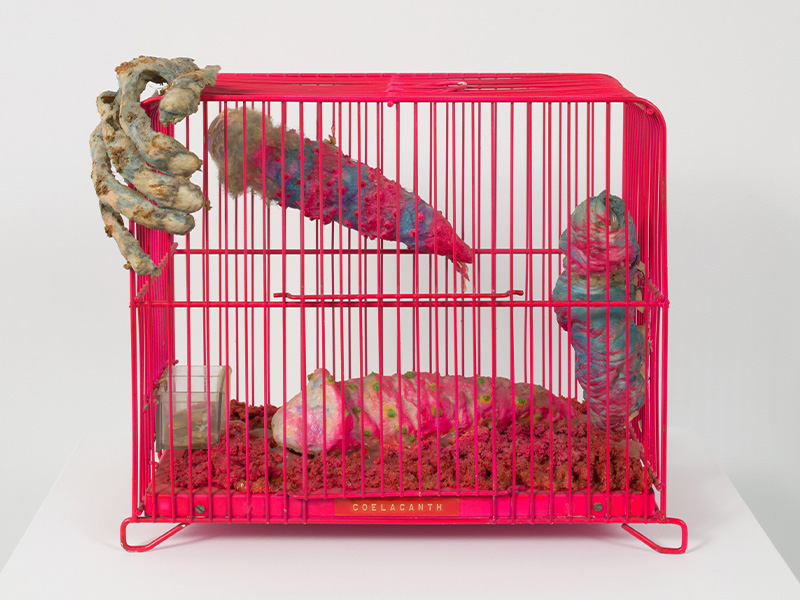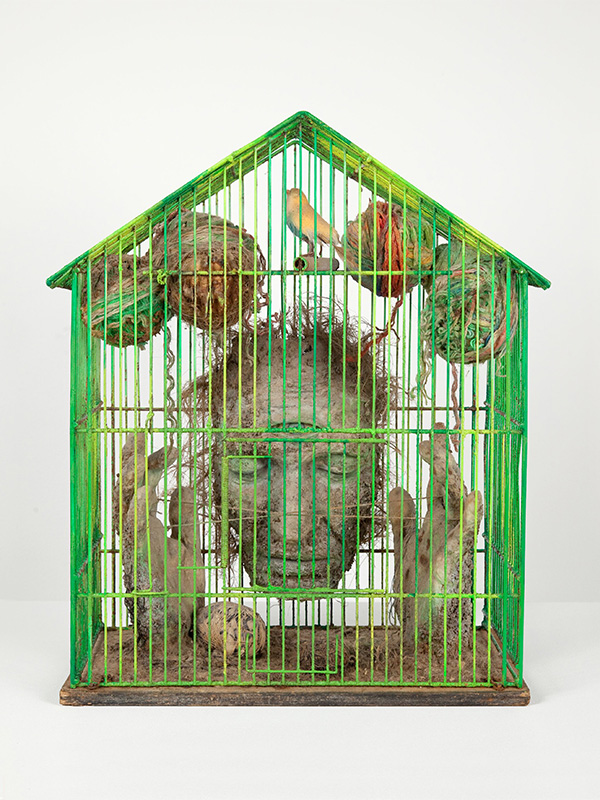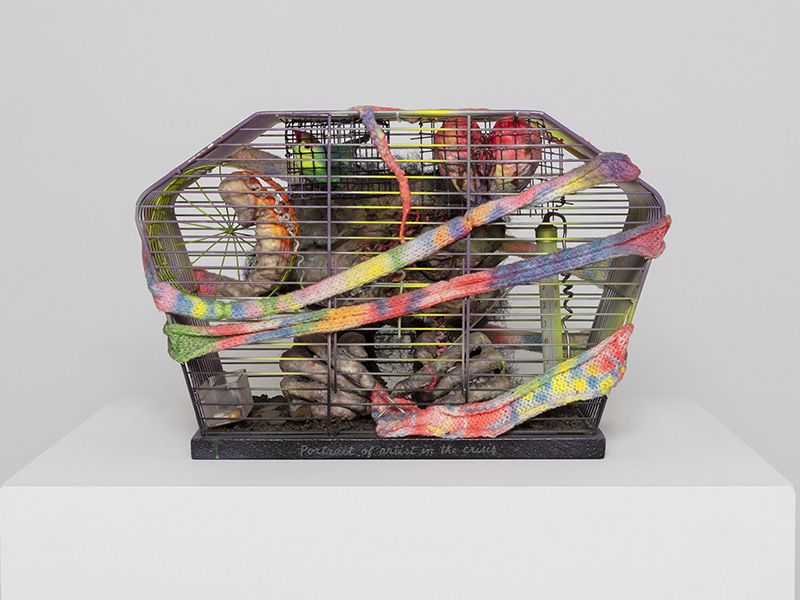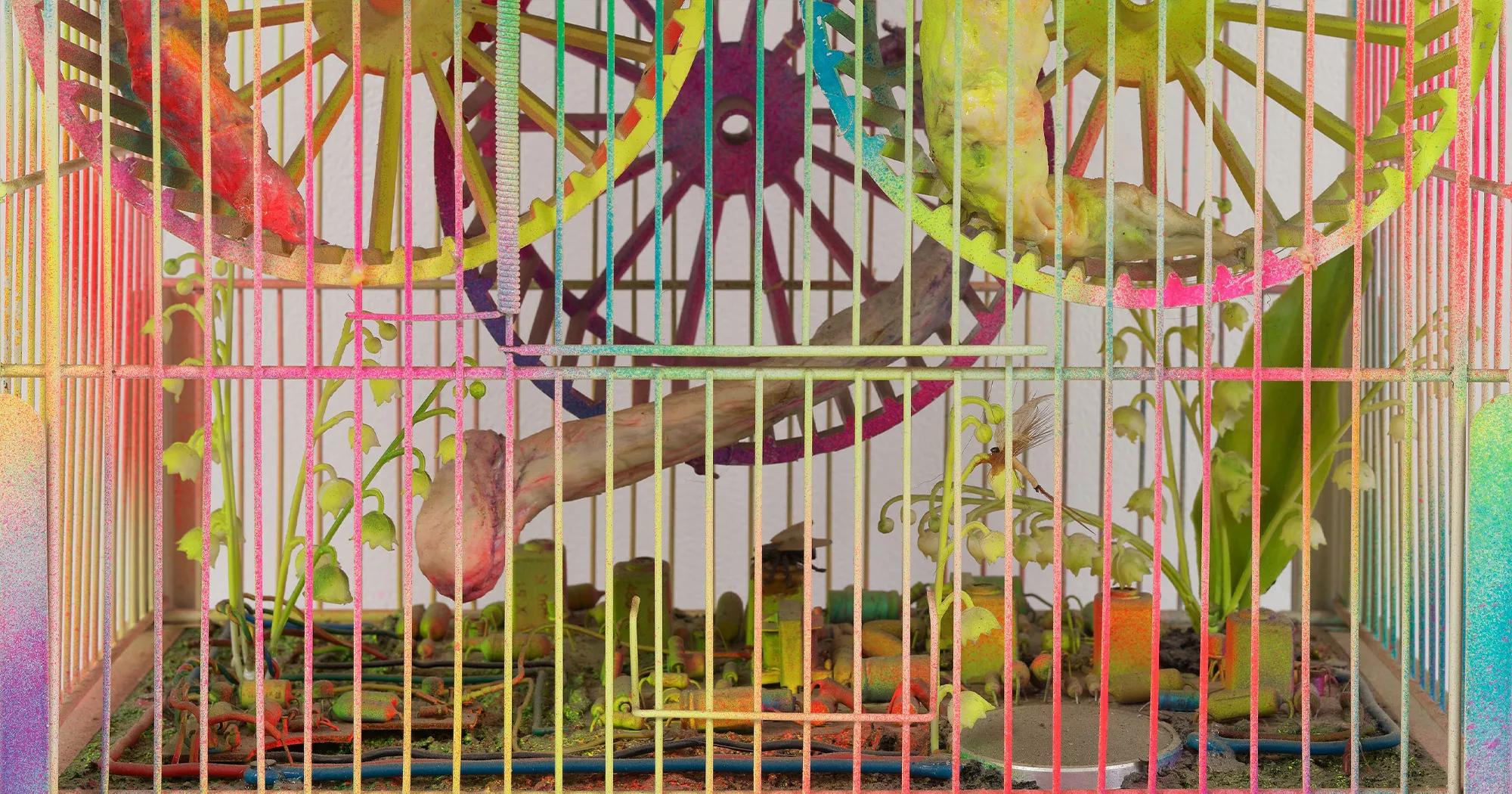
Tetsumi Kudo
Cages
31 MAY – 31 AUGUST 2024
Hong Kong
“My main concern is ‘observation.’ I observe you, myself, and all other human beings the same way a doctor observes guineapigs.”
— Tetsumi Kudo
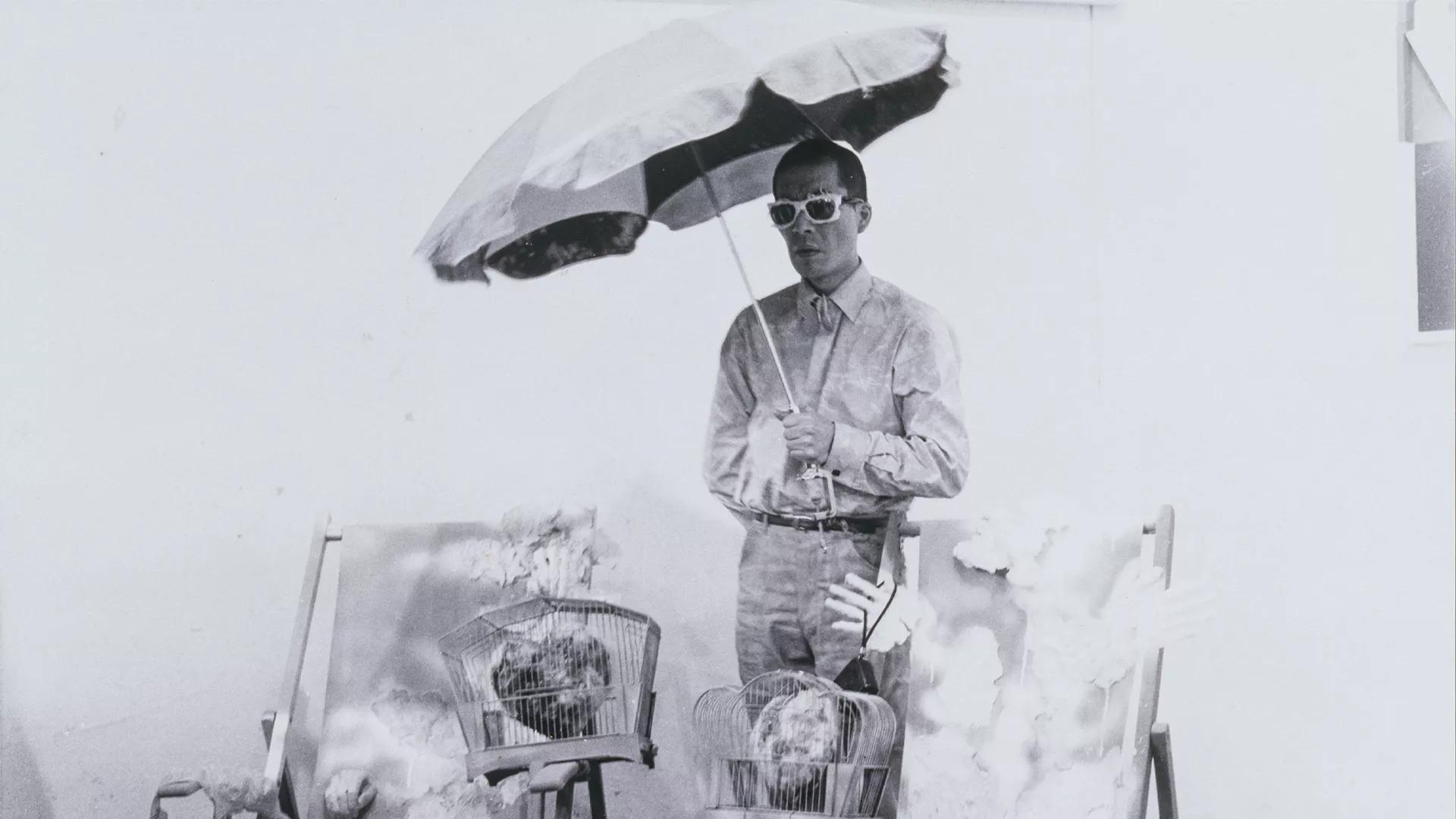
EXPLORE THE EXHIBITION
In a wide-ranging practice spanning four decades, post-war Japanese artist Tetsumi Kudo (1935 –1990) explored the human experience, interrogating the proliferation of mass consumption and the rise of technology. His oeuvre addresses themes of colonialism, racism, social cohesion, and environmental degradation through biomorphic sculptures and assemblages incorporating found materials. Opening 31 May, ‘Tetsumi Kudo. Cages’ is the artist’s first solo exhibition in Greater China.
This exhibition brings together a selection of Kudo’s signature cages made between 1966 and 1980. The worlds created inside these varied environments are intended to encourage viewers to understand themselves as part of an integrated and intricate cosmos in which nature, technology, and humanity influence each other, a system he dubbed the New Ecology.
“In his evocatively decorative language, Kudo calls for a fundamental rethinking of the relationship between nature, humanity, and technology.”
— Doryun Chong
Deputy Director, Curatorial and Chief Curator at M+, Hong Kong
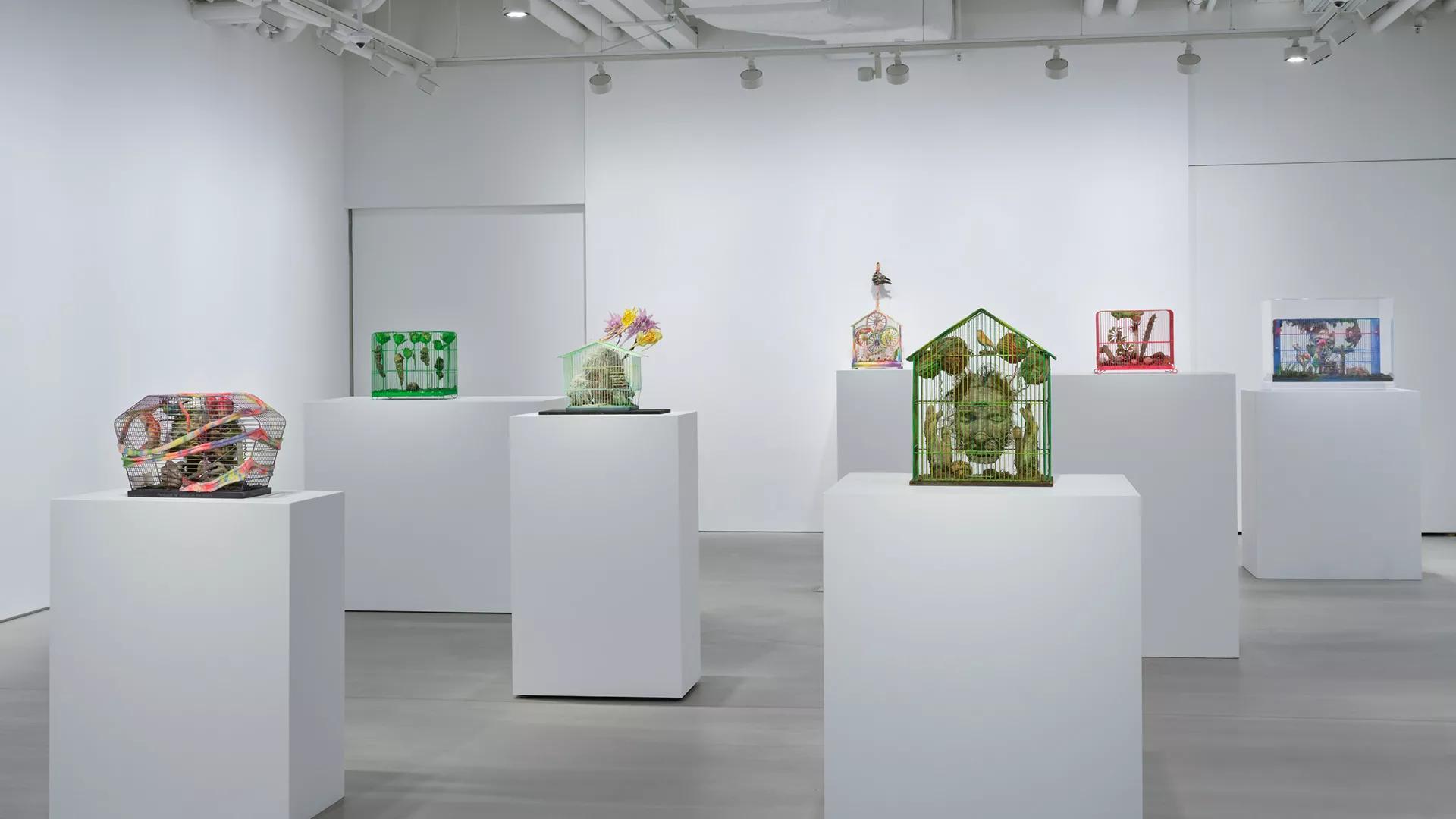
Kudo was born in Osaka, Japan in 1935 and attended Tokyo National University of Fine Arts from 1954 – 1958. He remained in Tokyo until 1962 before moving to Paris and spent the remainder of his life there. In Europe, Kudo thought of himself as an ‘observer’ of the West, compelled to disrupt the political, economic, and anthropocentric climate of European humanism and its influence on 20th century art and culture.
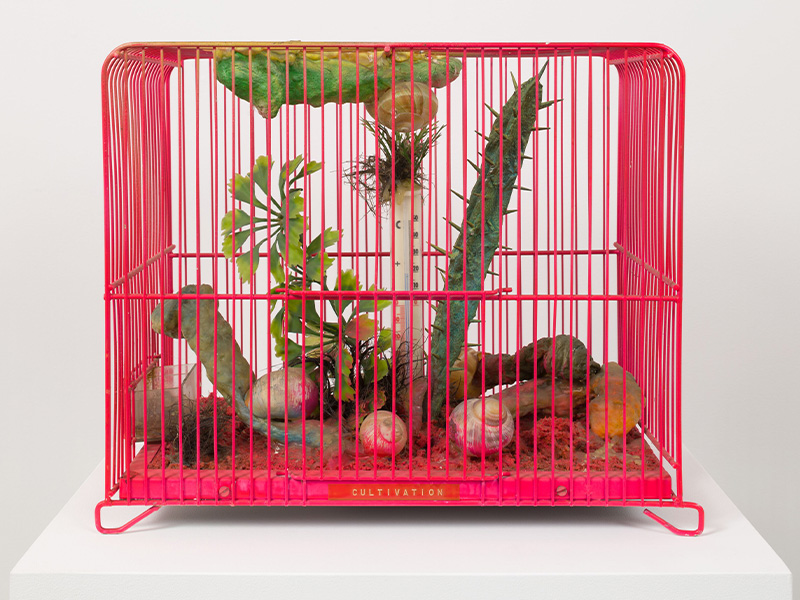
Cultivation
1972

Untitled
1978

In 1965, Kudo began working with cages, which he continued to explore for the next 15 years, his longest sustained engagement with a form. These works are significant for their inclusion of an everyday object like the birdcage, which contextualizes his assemblages within the realm of the domestic. In ‘For Your Living Room - For Nostalgic Purpose’ (1966), forms that resemble both pupae and phalluses crawl up and along the sides of a cage, while others sit perched on swings like canaries. Kudo fills their food and water trays with pills rather than sustenance like bird seed. In these environments, Kudo perpetuates the idea that humans, like pets, are being ‘fed’, observed, or controlled by a larger organizing system.
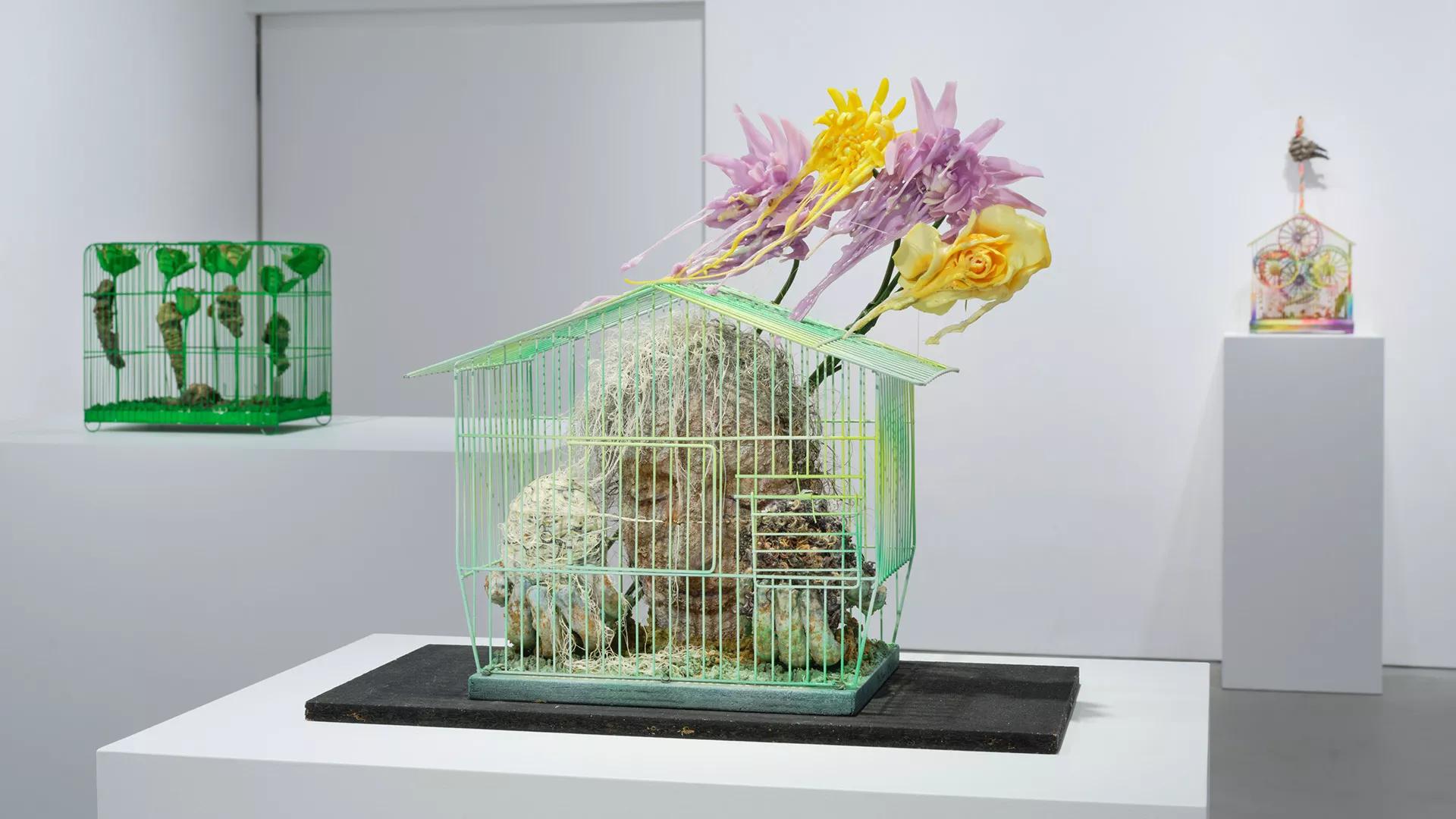
In the early to mid-1970s, Kudo’s work became more introspective. He shifted away from critiques of European society to explore philosophical and metaphysical ideas such as the continuums of time, memory, and spiritual identity. These concerns were often articulated in cages in which the figures seemingly have a third eye, a reference to Lord Shiva, or hold skeins of thread representing the connections between past and present and the development and transmission of cultural knowledge, such as in ‘Portrait of Artist, Buddha in Paris (Meditation between the programmed future and recorded memory)’ (1976) and ‘Meditation Between Memory and Future’ (1978). The plastic flowers, an element Kudo used often in his work, suggest the natural processes of growth and decay, which are part of the continuity of time and the cycles of life and nature.
Underlying all of Kudo’s work is an interest in how systems like time, nature and culture connect and overlap and how individuals fit into the natural and cosmic order.
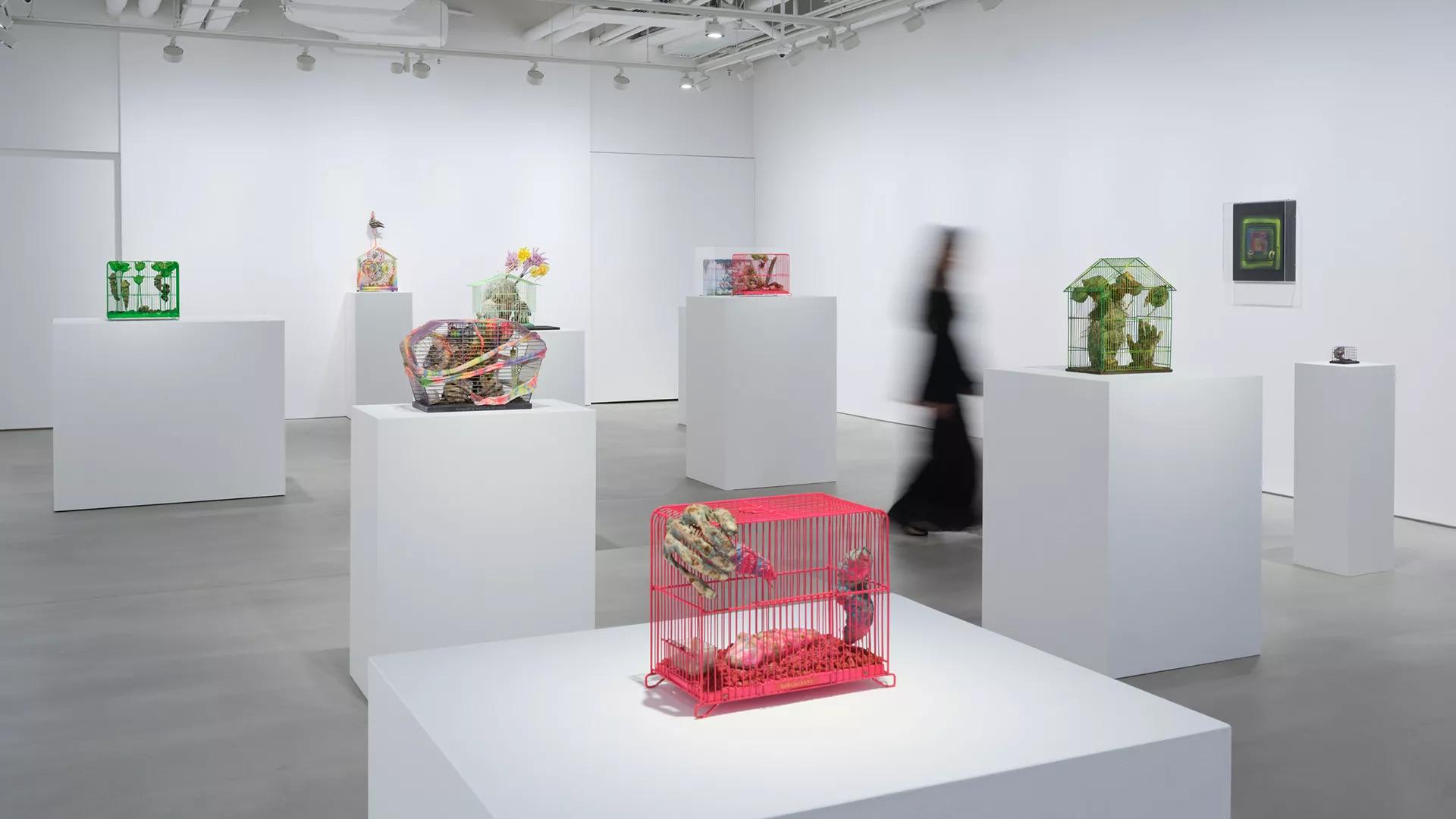
‘Tetsumi Kudo. Cages’ is organized in collaboration with Hiroko Kudo and the Estate of the Artist as well as Joshua Mack.
Tetsumi Kudo’s works can be found in major collections such as Aomori Museum of Art, Aomori, Japan; Centre Georges Pompidou, Paris, France; M+, Hong Kong; Musée d’Art Moderne de la Ville de Paris, France; Museum of Contemporary Art, Tokyo, Japan; National Museum of Art, Osaka, Japan; National Museum of Modern Art, Tokyo, Japan; Solomon R. Guggenheim Museum, New York NY; Stedelijk Museum, Amsterdam, The Netherlands; the Museum of Modern Art, New York NY; the Pinault Collection, Venice, Italy and Walker Art Center, Minneapolis MN, among others.
Related Content
About the Artist

Tetsumi Kudo
In a wide-ranging practice spanning four decades, Japanese artist Tetsumi Kudo (1935 –1990) explored the human experience, interrogating the proliferation of mass consumption and the rise of technology. His oeuvre addresses themes of colonialism, racism, social cohesion, and environmental degradation through biomorphic sculptures and assemblages incorporating found materials.
In the late 1950s and early 1960s, Kudo was a key player in the artistic avant-garde, critiquing consumerism and political conformity in Japan, and in the Nouveau Realisme movement in France. Working to subvert the separation between art and lived experience, Kudo’s influence can be found in the works of artists such as Mike Kelley, Paul McCarthy, Isa Genzken, and David Altmejd.
Born in Osaka, Japan in 1935 to parents who were painters and educators, Kudo attended Tokyo National University of Fine Arts from 1954 – 1958. His worldview was shaped from an early age by the destruction of the Second World War as well as a scepticism towards traditional Japanese society that characterized much post-war political debate. Maintaining a contrary attitude towards traditional pedagogy, he supplemented his education by reading pamphlets on astrophysics, set theory, and quantum mechanics and organizing shows with fellow students.
Kudo remained in Tokyo until 1962. During this time he explored forms of expression ranging from gestural abstraction to sculptures incorporating objects such as scrub brushes, woven bamboo, colored yarn and tree limbs. He exhibited regularly in the annual Yomiuri Independant, the most significant venue for contemporary art in Japan. Kudo also held six solo exhibitions often accompanied by happening-like events, activities noted by Allan Kaprow in his seminal book, ‘Assemblages, Environments and Happenings’ (1966).
In 1962, Kudo was awarded the grand prize in the 2nd International Young Artist Pan-Pacific Exhibition. With the prize money of $1,500, earmarked for study in Paris, he and his wife moved to the French capital which became their residence for the remainder of his life. In France Kudo created series of works incorporating store-bought items such plastic dolls and kitchenware, small pet cages in which body parts fuse with transistors and circuit boards, and terrariums and hothouses in which plastic plants grow among vacuum tubes and slug like phalluses. These reflect his belief that ethical values had become as exchangeable as consumer goods and that technology, nature and humanity had come to influence each other in a closed circuit he dubbed ‘New Ecology.’
Kudo began traveling to Japan regularly in the 1980s and taught at Tokyo National University of Fine Arts until his death in 1990. Despite living in Europe for most of his life, Kudo’s art took on a transcultural and cosmopolitan worldview, with work that draws both on Japanese tradition and Western Modernism. His satirical, critical, and often matter of fact artistic practice has become a model for younger artists in an age of globalization and cultural transformation.
Kudo exhibited extensively in France, Holland, Germany and Italy, often inaugurating his shows with happenings attended by figures such as Marcel Duchamp and the venerable gallerist Ileana Sonnabend. In 1964 Dutch curator Wim Beeren included Kudo in ‘Nieuwe Realisten,’ or New Realists, a global survey of contemporary figuration and realism at the Gemeente Museum in The Hague. Major surveys of his work were presented at the Kunstverien, Dusseldorf in 1970 and the Stedelijk Museum, Amsterdam, in 1972. Since his death, Kudo has been the subject of retrospectives at the National Museum of Art Osaka (1994-1995 and 2013-2014) both of which exhibitions toured in Japan; La Maison Rouge, Paris, 2007; the Walker Art Center, Minneapolis, USA, 2008; the Fridericianum, Kassel, Germany, 2016; and The Louisiana Museum of Modern Art, 2020. His work has also been included in group exhibitions at The Museum of Modern Art and The Centre Pompidou.
Tetsumi Kudo’s works can be found in major collections such as Aomori Museum of Art, Aomori, Japan; Centre Georges Pompidou, Paris, France; M+, Hong Kong; Musée d’Art Moderne de la Ville de Paris, France; Museum of Contemporary Art, Tokyo, Japan; The National Museum of Art, Osaka, Japan; The National Museum of Modern Art, Tokyo, Japan; Solomon R. Guggenheim Museum, New York NY; Stedelijk Museum, Amsterdam, The Netherlands; The Museum of Modern Art, New York NY; the Pinault Collection, Venice, Italy and Walker Art Center, Minneapolis MN, among others.
Current Exhibitions
1 / 10


